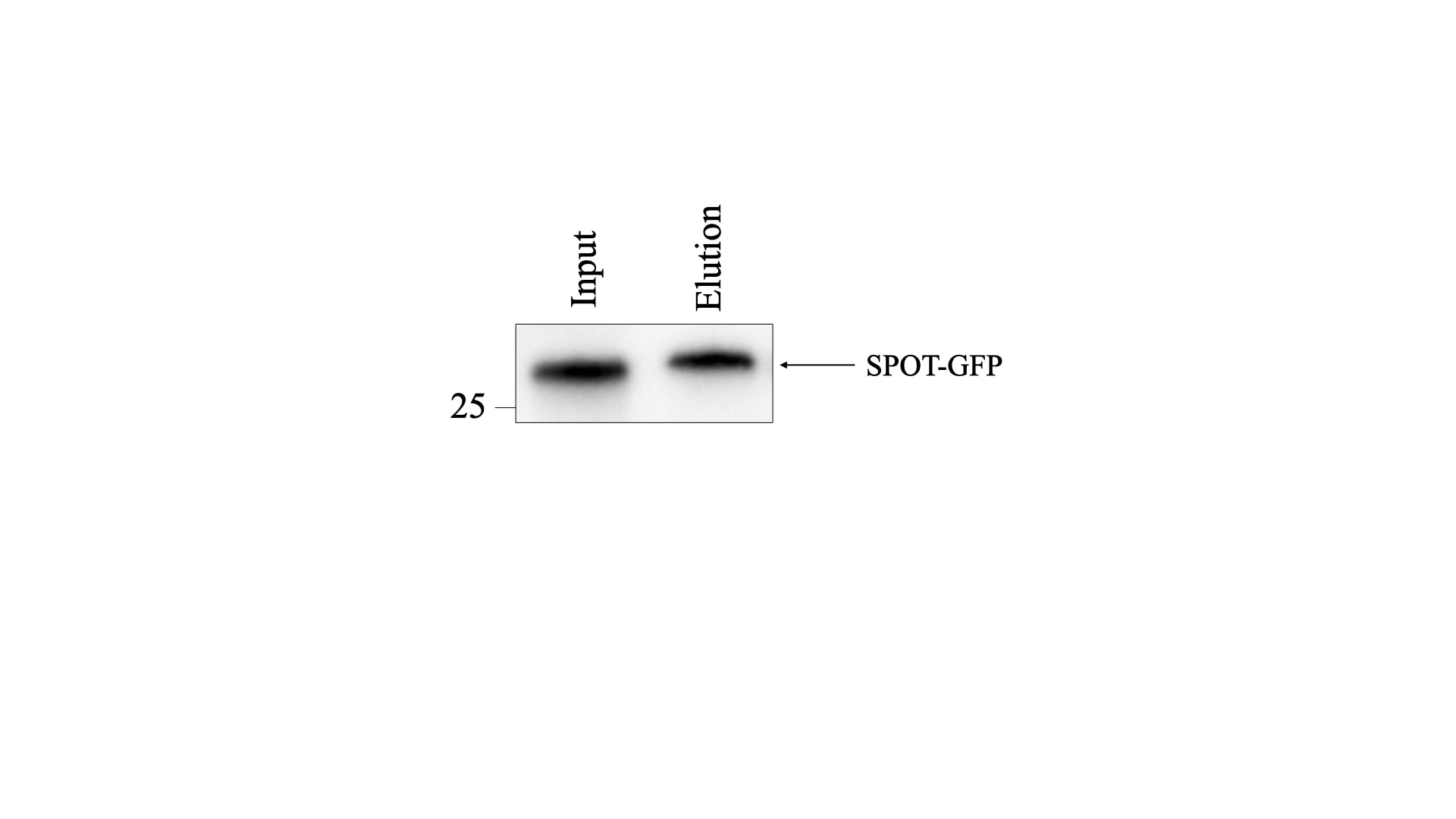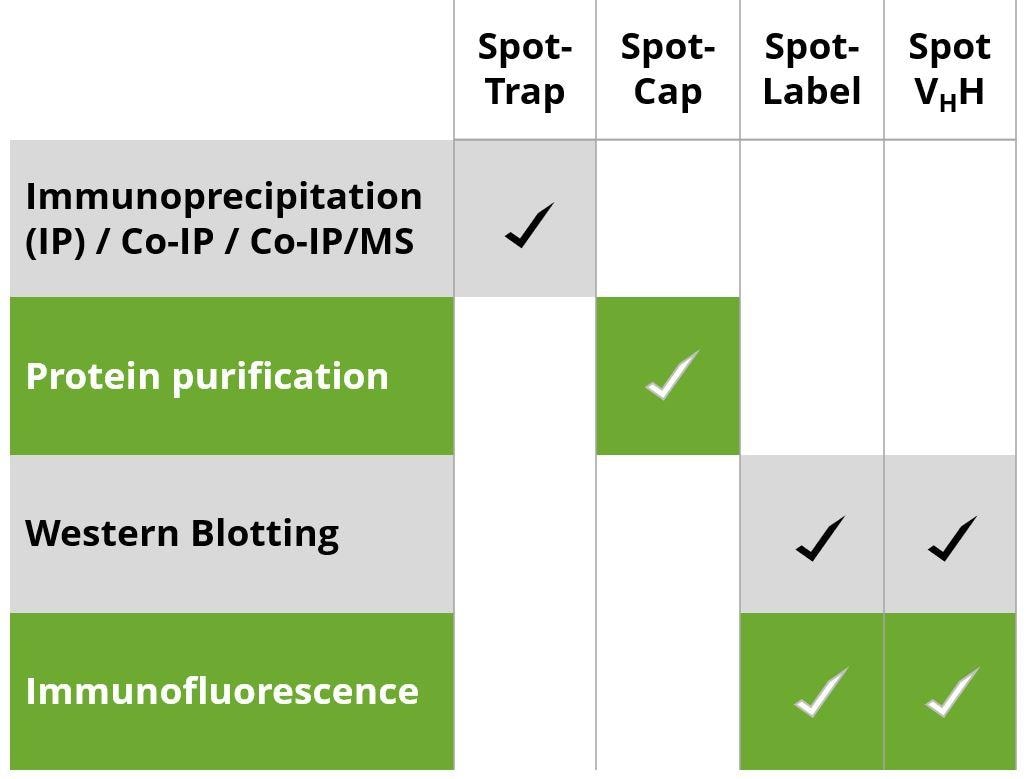Validation Data Gallery
Product Information
Spot-Trap® Magnetic Agarose is an affinity reagent for immunoprecipitation (IP) of Spot-tagged proteins. It consists of an anti-Spot-Tag® VHH/ Nanobody that is coupled to magnetic agarose beads.
| Description | Immunoprecipitation of Spot-tagged proteins and their interacting factors with anti-Spot Nanobody conjugated to Magnetic Agarose.
• Magnetic separation with easy and efficient washing of Spot-Trap Magnetic Agarose • IP and Co-IP of Spot-tagged proteins without size limitation • No contaminating heavy and light antibody chains • Suitable for downstream mass spec analysis • Recombinantly expressed without batch-to-batch variation • Well-characterized and validated • Ready-to-use • Short incubation time of 30-60 minutes |
| Applications | IP, CoIP, ChIP, RIP |
| Specificity/Target | Spot-Tag® sequence PDRVRAVSHWSS |
| Binding capacity | 17.5 μg of recombinant Spot-tagged protein (~30 kDa) per 25 μL bead slurry |
| Conjugate | Magnetic agarose beads; bead size: ~40 µm (cross-linked 6 % magnetic agarose beads) |
| Elution buffer | SDS sample buffer 10 mM NaOH pH 12 |
| Wash buffer compatibility | 2 M urea, 2 M NaCl, 10 mM DTT, 2 % Nonidet P40 Substitute, 1 % Triton X-100, 0.1 % SDS |
| Type | Nanobody |
| Class | Recombinant |
| Host | Alpaca |
| Affinity (KD) | Dissociation constant KD of 6 nM |
| Compatibility with mass spectrometry | The Spot-Trap® is optimized for on-bead digestion. For the application note, please click here: On-bead digest protocol for mass spectrometry |
| RRID | AB_2827591 |
| Storage Buffer | 20% ethanol |
| Storage Condition | Shipped at ambient temperature. Upon receipt store at 4°C. Stable for one year. Do not freeze! |
| Spot-Tag® Origin | Engineered 12 amino acid sequence modified from the unstructured N-terminus of beta-catenin |
| Cross Reactivity | The Spot-Nanobody shows minimal cross reactivity with beta-catenin. |
| Size | 25ul/reactions (eg:20rxns=500ul slurry) |
Documentation
| SDS |
|---|
| etma_SDS_Spot-Trap® Magnetic Agarose (EN) |
| Datasheet |
|---|
| Spot-Trap® Magnetic Agarose Datasheet |
| Application notes |
|---|
| Applications note Spot-System for for CRISPR’ed Spot-Tag |
| Troubleshooting |
|---|
| Troubleshooting guide immunoprecipitation (PDF) |
Publications
| Application | Title |
|---|---|
Mol Cell BLM and BRCA1-BARD1 coordinate complementary mechanisms of joint DNA molecule resolution | |
Mol Cell Caspase cleavage releases a nuclear protein fragment that stimulates phospholipid scrambling at the plasma membrane. | |
Nucleic Acids Res Readthrough of stop codons under limiting ABCE1 concentration involves frameshifting and inhibits nonsense-mediated mRNA decay. | |
Cells The Phosphoarginine Phosphatase PtpB from Staphylococcus aureus Is Involved in Bacterial Stress Adaptation during Infection. | |
J Biol Chem BioID screening of biotinylation sites using the avidin-like protein Tamavidin 2-REV identifies global interactors of stimulator of interferon genes (STING). |
Reviews
The reviews below have been submitted by verified Proteintech customers who received an incentive for providing their feedback.
FH Tsimafei (Verified Customer) (12-04-2022) | IP was performed from cells expressing SPOT-tagged GFP. 20µl of beads were used for 1mg of total protein.
 |



